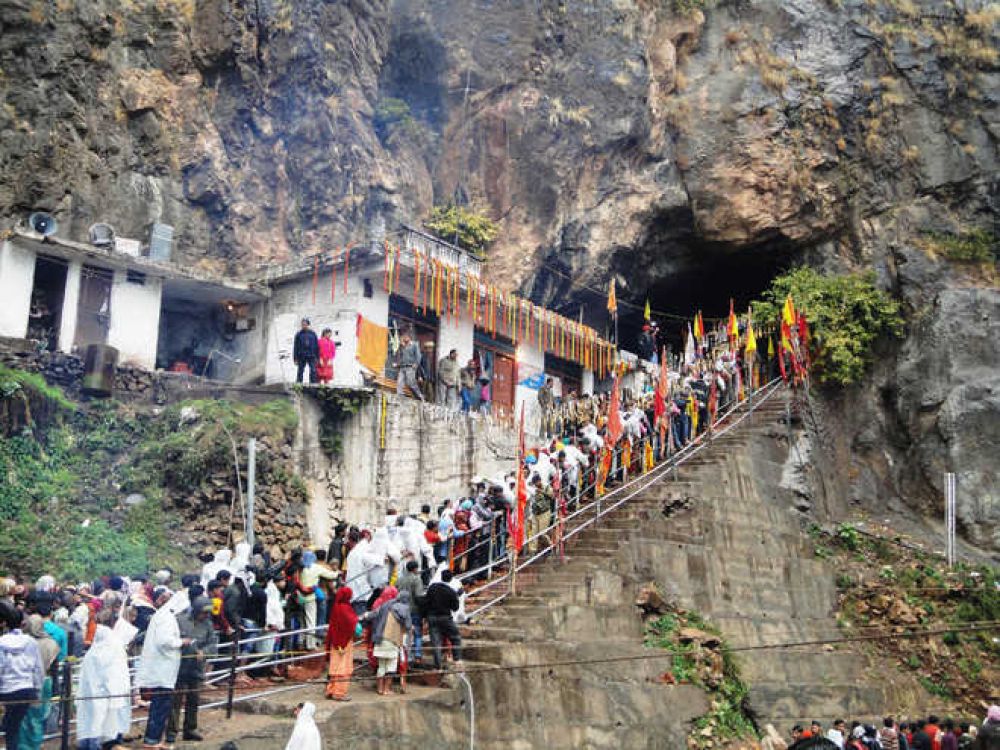

The Shiv Khori Cave Temple, located in the Reasi district of the beautiful and picturesque state of Jammu and Kashmir in India, is a revered site for devotees of Lord Shiva. It represents not just spiritual significance but also a historical journey through the lens of tourism.
The history of this sacred cave temple stretches back to ancient times and has been mentioned in various Hindu scriptures. The name Shiv Khori translates to ‘Shiva’s Cave’, and the shrine within is said to be an unending one, with many passages that have yet to be explored fully. According to local legends and beliefs, it is said that the cave is directly linked to the famous Amarnath caves, another key destination for Shiva devotees.
The Shiv Khori cave itself is a natural marvel. Measuring over 200 meters long, one meter wide, and two to three meters high, it contains a self-formed Shiva lingam, which is the main attraction within its premises. Besides this, the cave is adorned with other natural formations that resemble various deities, adding to a sense of mystique and reverence for visitors.
The inception of tourism at Shiv Khori can be traced back centuries as pilgrims have been visiting the shrine for generations. However, structured tourism development in the area began to see more focus post the independence of India, as the government recognized the potential of pilgrimage tourism in the region. With the rise in popularity of the Vaishno Devi pilgrimage nearby, Shiv Khori started to gain attention as a complementary religious visit.
In recent years, the Shri Shiv Khori Shrine Board has made significant efforts to develop and promote the site as a major tourist and pilgrimage destination. Amenities for pilgrims such as guesthouses and transport facilities have vastly improved, leading to a steady increase in the number tourists visiting each year.
The latest trend in tourism at Shiv Khori combines spirituality with eco-tourism and adventure. With Jammu and Kashmir evolving as an adventure tourism hub, tourists are now pairing their visit to the shrine with trekking expeditions and exploring the green, undulating landscapes of the region. Festivals like Maha Shivaratri witness a huge surge in pilgrim influx, showcasing high communal harmony and spirit.
The Shiv Khori Mela (festival), which occurs annually, has become a crucial part of the local tourism landscape, bringing together faith, culture, and economic activity. Much emphasis has also been put on sustainable tourism practices to ensure that the delicate balance of nature and the sanctity of the shrine are maintained.
For tourists planning to visit, the temple is open throughout the year, with timings varying in winter and summer. Pilgrims typically trek the last 3-kilometer path on foot through picturesque mountainous terrain, although helicopter services and ponies are also available. The nearest major town is Katra, which also serves as the base camp for Vaishno Devi pilgrims, offering an array of accommodations and amenities.
Note: Due to the sensitive nature of the region, visitors are advised to keep abreast of local conditions and requirements before planning their journey.